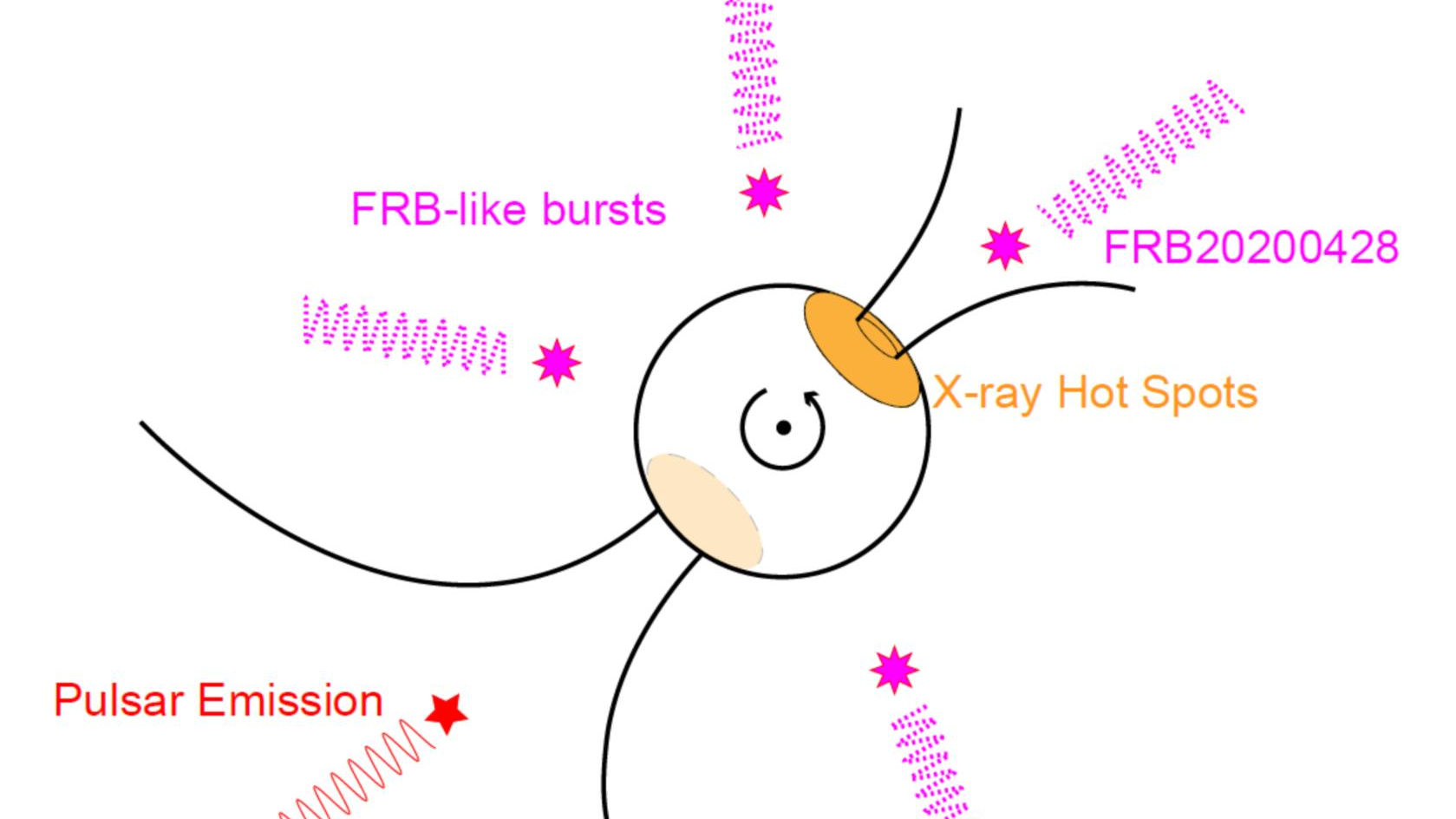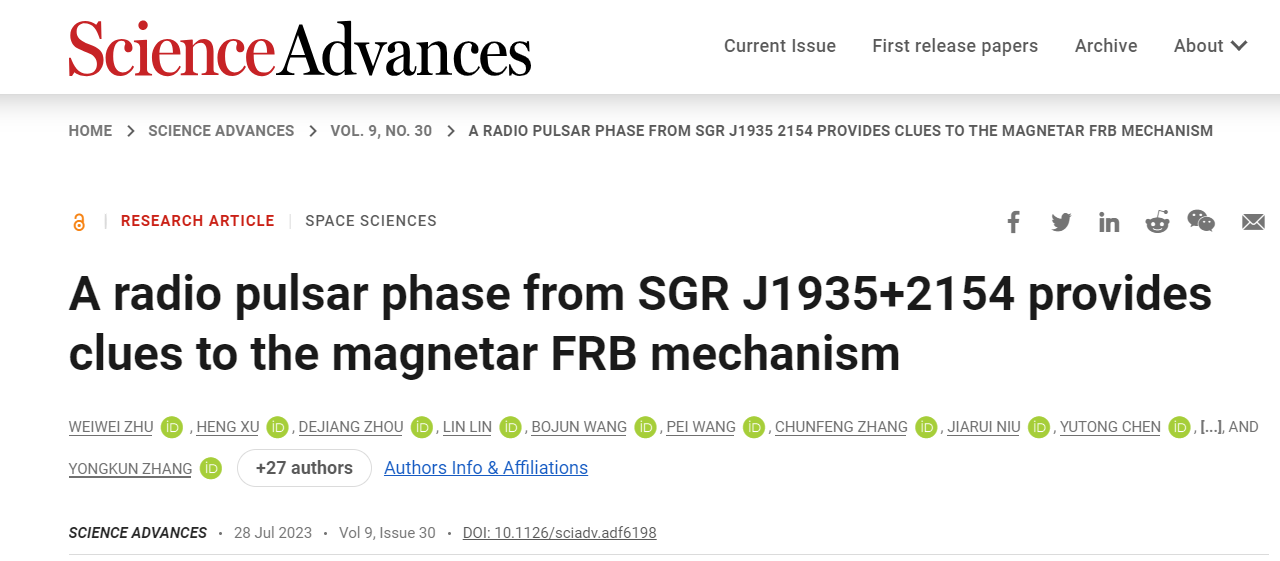
The illustration of a possible picture for SGR J1935+2154's radio and x-ray emission geometry. /NAO
The illustration of a possible picture for SGR J1935+2154's radio and x-ray emission geometry. /NAO
A team of scientists from China and the United States revealed that there may be differences in physical mechanisms between fast radio bursts (FRBs) and radio pulsar emission.
The team found that the phase distributions that the FRB bursts emitted were different from the pulses of pulsars, and the former bursts appeared in random phases.
The study monitored a Galactic magnetar, the SGR J1935+2154, using China's Five-hundred-meter Aperture Spherical Radio Telescope (FAST), the world's largest single-dish and most sensitive radio telescope, and detected its pulses in 16.5 hours over 13 days.
Jointly conducted by China's National Astronomical Observatories (NAO) under the Chinese Academy of Sciences, Peking University, Beijing Normal University, the U.S.'s University of Nevada and other universities and institutions, relative research was published in the journal Science Advances on Friday.

A screenshot of the study published on the website of Science Advances.
A screenshot of the study published on the website of Science Advances.
FRBs are bright, millisecond-scale radio flashes deep in the universe, and hundreds of such bursts have been detected by radio telescopes around the world, according to the NAO.
The FAST has carried out a series of observations on FRBs, revealing their polarization, energy source and distributions. The mechanism for generation of FRB emission and their origin are still one of the most popular research directions in astrophysics, it said.
The SGR J1935+2154 magnetar burst on April 28, 2020, and their bright radio bursts were captured by ground-based radio telescopes. It was detected to have sporadically produced several similar bright radio bursts afterwards.
According to the NAO, the bright radio bursts from magnetars provide important information for studying FRBs' mechanism.